Discover the Marangu Route: Trekking Highlights, Challenges, and Pro Tips for Kilimanjaro Success
Overview:
The Marangu Route is one of the most popular trails to Mount Kilimanjaro’s summit, earning its nickname “Coca-Cola Route” for its relative ease and the availability of hut accommodations. Unlike other routes, Marangu features cozy, shared dormitory-style huts, providing trekkers with shelter from the elements.
This route is favored for its direct path to the summit, making it a great choice for beginners or those seeking a less rugged adventure. However, its rapid ascent makes proper acclimatization crucial. Along the way, trekkers journey through diverse landscapes, from lush rainforests to alpine meadows, and eventually to the snow-capped summit at Uhuru Peak.
The Marangu Route offers an unforgettable Kilimanjaro experience for those who appreciate a structured, scenic, and relatively comfortable trek
The Marangu Route provides picturesque views of Kilimanjaro’s southern slopes. However, its use of the same trail for both ascent and descent reduces the variety of landscapes and often results in a busier path. Although the 5-day itinerary may seem appealing, it poses greater challenges due to limited acclimatization time. Beginners are advised to opt for the 6-day itinerary or consider a 7+ day option on alternative routes for a more gradual and enjoyable climb
Over the past decade, we’ve gathered extensive data on summit success rates for all Kilimanjaro routes, and we’re confident in their accuracy. Below are the success rates for our Marangu route expeditions:
The 6-day itinerary consistently achieves higher success rates than the 5-day option due to its more gradual acclimatization process. However, overall success rates on the Marangu route are slightly lower compared to routes like the 7-day Lemosho or Machame, primarily because of its steeper acclimatization profile. While the 6-day Marangu route is suitable for moderately fit beginners, the 5-day version is better suited for experienced high-altitude trekkers or those with prior acclimatization.
Our Marangu success rates are among the highest in the region, thanks to our skilled and experienced Kilimanjaro guides, superior expedition equipment, and stringent altitude sickness protocols. We maintain the largest inventory of oxygen systems in the area, provide full-sized, well-stocked medical kits on every trek, and conduct comprehensive medical check-ups twice daily. These measures ensure optimal acclimatization and significantly enhance your chances of reaching Uhuru Peak.
Welcome to Tanzania! Upon your arrival at Kilimanjaro International Airport (JRO), a friendly Shiri Adventures representative will greet you and assist with your transfer to your hotel. Relax and settle into your comfortable accommodation, which offers all the essentials you need: Cozy Rooms: Rest well after your journey. Hot Showers: Refresh yourself and unwind. Wi-Fi Access: Stay connected with loved ones. Swimming Pool: Take a dip and start your adventure with relaxation. In the evening, you'll attend a detailed briefing with your guide, ensuring you're fully prepared for the incredible journey ahead. This is also the perfect time to ask questions and finalize any details about your itinerary
The journey begins at Marangu Gate, located at an altitude of 1,870 meters (6,135 feet), and takes trekkers through the lush rainforest to Mandara Hut at 2,720 meters (8,923 feet). This initial leg of the Marangu Route covers approximately 8 km (5 miles) and typically takes 4–6 hours to complete.
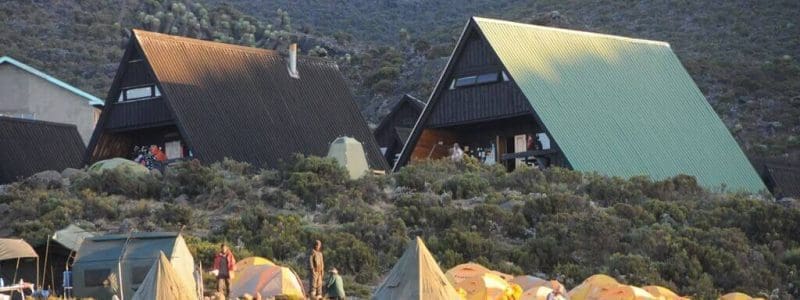
Trek Highlights
Arrival at Mandara Hut
Mandara Hut, located in a forest clearing, serves as the first overnight stop. The camp consists of simple wooden huts with bunk beds and shared facilities. From the camp, a short walk leads to Maundi Crater, offering panoramic views of Kenya’s plains on clear days.
Tips for a Successful Start
This first segment of the Marangu Route introduces climbers to the beauty of Kilimanjaro’s lower slopes and sets the stage for the adventure ahead
This leg of the Marangu Route takes trekkers from the lush rainforest of Mandara Hut (2,720 meters / 8,923 feet) into the open moorland as they journey to Horombo Hut at 3,720 meters (12,205 feet). The trek spans approximately 11 km (6.8 miles) and takes around 5–7 hours, depending on pace and conditions
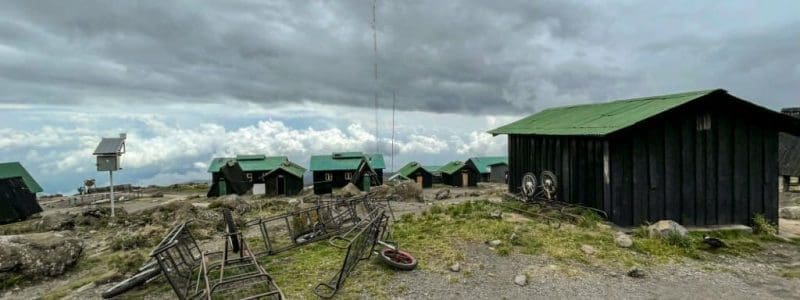
Trek Highlights
Arrival at Horombo Hut
Horombo Hut is a larger and more spacious campsite compared to Mandara. It offers wooden huts, a dining area, and sleeping accommodations for trekkers. The site is surrounded by moorland vegetation, and the air becomes noticeably thinner as trekkers acclimate to the higher elevation.
Tips for a Comfortable Trek
This segment provides trekkers with a glimpse of Kilimanjaro’s diverse ecosystems and prepares them for the challenges of higher altitudes.
The journey from Horombo Hut (3,720 meters / 12,205 feet) to Kibo Hut (4,703 meters / 15,430 feet) marks a significant step on the Marangu Route, as trekkers transition from the moorland zone to the alpine desert. Spanning approximately 10 km (6.2 miles), this trek typically takes 5–7 hours. It is a crucial acclimatization day, preparing hikers for the summit push.
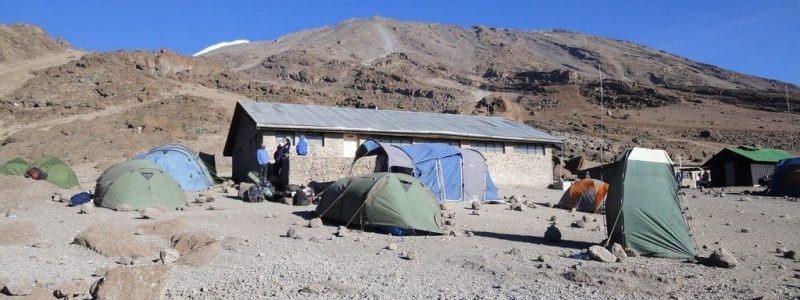
Trek Highlights
Arrival at Kibo Hut
Kibo Hut is a stone-built base camp located at the foot of Kilimanjaro’s summit cone. It provides basic sleeping accommodations and serves as the starting point for the summit attempt. Trekkers typically rest here for a few hours before beginning their midnight ascent to Uhuru Peak.
Tips for a Successful Trek to Kibo Hut
This segment of the Marangu Route brings trekkers closer to Kilimanjaro’s peak, offering breathtaking scenery and the thrill of nearing the final goal.
The trek to Uhuru Peak (5,895 meters / 19,341 feet) is the most challenging yet rewarding part of the Marangu Route. Starting from Kibo Hut at midnight, climbers navigate through darkness and freezing temperatures to reach the summit at sunrise. After enjoying the spectacular views from the peak, the descent begins, taking you back to Horombo Hut for rest and then to Marangu Gate the following day
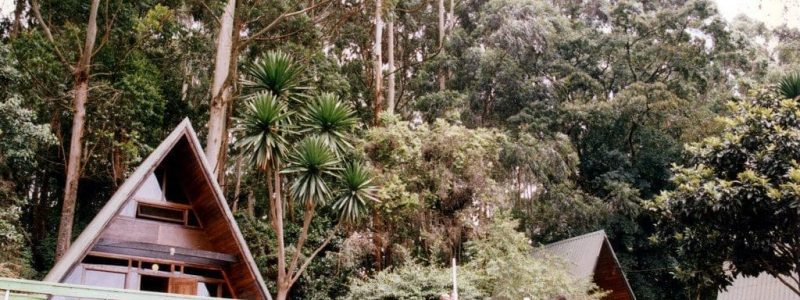
Summit Push Highlights
Descent to Horombo Hut
After taking in the summit experience, trekkers descend to Kibo Hut for a brief rest before continuing to Horombo Hut. The descent allows you to lose altitude quickly, reducing the risk of altitude-related issues.
Return to Marangu Gate
On the final day, trekkers descend from Horombo Hut (3,720m / 12,205ft) to Marangu Gate (1,870m / 6,135ft). This 20 km (12.4 miles) journey takes around 6–8 hours, with lush rainforest and scenic landscapes marking the trail.
Tips for the Summit and Descent
Completing the Marangu Route and reaching Uhuru Peak is a remarkable achievement, blending physical endurance, mental resilience, and the joy of standing atop Africa’s highest mountain.
After your incredible journey up Mount Kilimanjaro, it’s time to rest and reflect on your achievement. After descending to Mweka Gate, you'll be transferred to your hotel to relax and rejuvenate. Spend the day at leisure, enjoying the comfort and warmth of the hotel facilities before your onward trave
Welcome to Tanzania! Upon your arrival at Kilimanjaro International Airport (JRO), a friendly Shiri Adventures representative will greet you and assist with your transfer to your hotel. Relax and settle into your comfortable accommodation, which offers all the essentials you need: Cozy Rooms: Rest well after your journey. Hot Showers: Refresh yourself and unwind. Wi-Fi Access: Stay connected with loved ones. Swimming Pool: Take a dip and start your adventure with relaxation. In the evening, you'll attend a detailed briefing with your guide, ensuring you're fully prepared for the incredible journey ahead. This is also the perfect time to ask questions and finalize any details about your itinerary
The journey begins at Marangu Gate, located at an altitude of 1,870 meters (6,135 feet), and takes trekkers through the lush rainforest to Mandara Hut at 2,720 meters (8,923 feet). This initial leg of the Marangu Route covers approximately 8 km (5 miles) and typically takes 4–6 hours to complete.

Trek Highlights
Arrival at Mandara Hut
Mandara Hut, located in a forest clearing, serves as the first overnight stop. The camp consists of simple wooden huts with bunk beds and shared facilities. From the camp, a short walk leads to Maundi Crater, offering panoramic views of Kenya’s plains on clear days.
Tips for a Successful Start
This first segment of the Marangu Route introduces climbers to the beauty of Kilimanjaro’s lower slopes and sets the stage for the adventure ahead
This leg of the Marangu Route takes trekkers from the lush rainforest of Mandara Hut (2,720 meters / 8,923 feet) into the open moorland as they journey to Horombo Hut at 3,720 meters (12,205 feet). The trek spans approximately 11 km (6.8 miles) and takes around 5–7 hours, depending on pace and conditions

Trek Highlights
Arrival at Horombo Hut
Horombo Hut is a larger and more spacious campsite compared to Mandara. It offers wooden huts, a dining area, and sleeping accommodations for trekkers. The site is surrounded by moorland vegetation, and the air becomes noticeably thinner as trekkers acclimate to the higher elevation.
Tips for a Comfortable Trek
This segment provides trekkers with a glimpse of Kilimanjaro’s diverse ecosystems and prepares them for the challenges of higher altitudes.
The acclimatization day at Horombo Hut (3,720 meters / 12,205 feet) is a crucial part of the Marangu Route trek. This rest day allows your body to adjust to the increasing altitude before the challenging summit push. Spending an additional night at Horombo Hut is key for a higher summit success rate, as it helps prevent altitude sickness and ensures you are physically prepared for the higher altitudes ahead

What to Expect on the Acclimatization Day
Key Acclimatization Tips
This acclimatization day at Horombo Hut is an essential step towards successfully summiting Mount Kilimanjaro. With proper rest and care, you’ll be better prepared for the final push to Uhuru Peak.
The journey from Horombo Hut (3,720 meters / 12,205 feet) to Kibo Hut (4,703 meters / 15,430 feet) marks a significant step on the Marangu Route, as trekkers transition from the moorland zone to the alpine desert. Spanning approximately 10 km (6.2 miles), this trek typically takes 5–7 hours. It is a crucial acclimatization day, preparing hikers for the summit push.

Trek Highlights
Arrival at Kibo Hut
Kibo Hut is a stone-built base camp located at the foot of Kilimanjaro’s summit cone. It provides basic sleeping accommodations and serves as the starting point for the summit attempt. Trekkers typically rest here for a few hours before beginning their midnight ascent to Uhuru Peak.
Tips for a Successful Trek to Kibo Hut
This segment of the Marangu Route brings trekkers closer to Kilimanjaro’s peak, offering breathtaking scenery and the thrill of nearing the final goal.
The trek to Uhuru Peak (5,895 meters / 19,341 feet) is the most challenging yet rewarding part of the Marangu Route. Starting from Kibo Hut at midnight, climbers navigate through darkness and freezing temperatures to reach the summit at sunrise. After enjoying the spectacular views from the peak, the descent begins, taking you back to Horombo Hut for rest and then to Marangu Gate the following day

Summit Push Highlights
Descent to Horombo Hut
After taking in the summit experience, trekkers descend to Kibo Hut for a brief rest before continuing to Horombo Hut. The descent allows you to lose altitude quickly, reducing the risk of altitude-related issues.
Return to Marangu Gate
On the final day, trekkers descend from Horombo Hut (3,720m / 12,205ft) to Marangu Gate (1,870m / 6,135ft). This 20 km (12.4 miles) journey takes around 6–8 hours, with lush rainforest and scenic landscapes marking the trail.
Tips for the Summit and Descent
Completing the Marangu Route and reaching Uhuru Peak is a remarkable achievement, blending physical endurance, mental resilience, and the joy of standing atop Africa’s highest mountain.
After your incredible journey up Mount Kilimanjaro, it’s time to rest and reflect on your achievement. After descending to Mweka Gate, you'll be transferred to your hotel to relax and rejuvenate. Spend the day at leisure, enjoying the comfort and warmth of the hotel facilities before your onward trave
Our Kilimanjaro packages cover all transfers outlined in the program. When you arrive at Kilimanjaro, one of our drivers will pick you up in a spacious and comfortable Toyota Alphard and take you to your hotel. Our cars have large trunks that can accommodate plenty of luggage. Inside, you’ll find complimentary bottled water (custom-ordered by Shiri Adventures), a Wi-Fi hotspot, and wet wipes for your convenience. All our cars undergo regular examination and maintenance by our in-house team of technicians.
Our driving team consists of experienced and knowledgeable drivers, all of whom speak fluent English.
For the transfer to the trailhead of your climbing adventure, we will use Toyota Hiace or Coaster, which are better suited for navigating the wilderness terrain en route to Mt. Kilimanjaro. These cars are built to handle rough trails and ensure your safety.
At the end of your journey, we’ll also provide you with a return transfer to the Kilimanjaro International Airport. With our comprehensive package, you can rest easy and enjoy the journey without concerns about your transportation.
For your pre- and post-trek stay, we provide comfortable accommodations at a 3* hotel in Moshi Town. By default, guests are assigned shared double-occupancy rooms, with the option to request a single supplement for added privacy. The hotel offers everything a traveler needs, including professional staff, a restaurant, a swimming pool, comfortable rooms with mosquito nets, laundry service, and complimentary Wi-Fi. It’s the perfect place to relax and unwind before or after your Kilimanjaro trek. Whether you prefer a peaceful, tranquil environment or easy access to local amenities, your accommodation will ensure a convenient and comfortable stay
Our trekking packages provide essential camping equipment to ensure you have a comfortable and safe adventure on Mount Kilimanjaro. This includes tents, sleeping bags, sleeping mats, portable stoves, cooking gear, headlamps, and water containers. All equipment is carefully chosen for durability and functionality, allowing you to focus on your climb without worrying about your gear.
During your Kilimanjaro trek, we provide nutritious, well-balanced meals to keep you energized throughout the journey. Our experienced cook prepares fresh, wholesome meals using locally sourced ingredients. Breakfast typically includes porridge, eggs, fruits, and toast, while lunch and dinner feature a variety of hearty dishes such as pasta, rice, beans, soups, and meats. Snacks like granola bars and fruit are also provided between meals. Special dietary requirements can be accommodated with prior notice to ensure you have an enjoyable and satisfying trekking experience.
Our Kilimanjaro trekking package includes a team of highly experienced and professional guides and porters to ensure your safety and comfort throughout the climb. The guides are certified, knowledgeable about the mountain, and skilled in navigating its challenging terrain. They provide support, share valuable information about the route, and ensure your well-being during the trek. Our porters are responsible for carrying your gear, setting up camp, and maintaining camp logistics, allowing you to focus on your ascent. Both guides and porters are trained to deliver exceptional service, making your trek an unforgettable experience
For your safety and well-being during the Kilimanjaro trek, oxygen tanks are included in the trekking package. These are available in case of emergencies or if you experience altitude-related issues, such as shortness of breath or fatigue. The use of oxygen tanks helps climbers acclimatize better and ensures a safe ascent, especially at higher altitudes like above 15,000 feet. Our guides are trained to use the oxygen tanks when necessary and will monitor your condition closely throughout the climb.
To ensure your safety during the Kilimanjaro trek, GPS trackers are included in the trekking package. These devices are used to monitor your progress and track your location in real-time. They provide an added layer of security, allowing the trek leader and support team to monitor your movement throughout the climb. In case of emergencies or deviations from the planned route, the GPS tracker helps quickly identify your location, ensuring a swift response. This technology ensures that you are always connected and supported, adding peace of mind during your adventure
Our Kilimanjaro trekking package prioritizes your health and safety by including thorough medical check-ups before the trek begins. Our team provides fully-loaded medical kits with necessary supplies to handle common trekking ailments or emergencies. Additionally, an in-company doctor is available to monitor climbers’ health, especially during the ascent, to ensure proper acclimatization and address any medical concerns promptly. This comprehensive approach ensures you’re well-prepared for the trek and can focus on your adventure with peace of mind
Throughout your Kilimanjaro trek, you’ll have access to 24/7 support via satellite phone, ensuring constant communication even in remote areas. This service allows you to stay connected with the base team, providing peace of mind in case of emergencies or unexpected situations. The satellite phone ensures that, no matter where you are on the mountain, help is always just a call away, making your trek safer and more secure
Our Kilimanjaro trekking package includes fully-loaded medical kits, stocked with all the essential supplies to handle common trekking injuries and altitude-related health issues. The kits contain items such as pain relievers, anti-inflammatory medications, bandages, antiseptics, and other first-aid necessities. These kits are carried by the guides and available at all times during the trek to ensure prompt response to any medical needs, giving you confidence and peace of mind as you make your way up the mountain
Our Kilimanjaro trekking package includes all necessary park fees and taxes, ensuring a hassle-free experience. These fees cover your entrance to Kilimanjaro National Park, conservation efforts, and maintenance of the trekking routes. They also contribute to the preservation of the mountain’s unique ecosystem and wildlife. With these fees included in your package, you can focus on your climb without worrying about additional costs, as everything needed to access and enjoy the park is taken care of for you
Our Kilimanjaro trekking package provides you with a dedicated support team to ensure a smooth and successful adventure. From the moment you arrive, our experienced team of guides, porters, and support staff is at your service. They are trained to provide assistance with everything from gear management to health and safety, offering personalized support at every stage of the trek. This team’s primary goal is to ensure your comfort, well-being, and success as you tackle Kilimanjaro’s challenging routes. With their expertise, you’ll feel supported and well cared for throughout your journey
International flights to and from Tanzania are not included in the Kilimanjaro trekking package. It is the responsibility of the traveler to book and arrange their own flights. However, we are happy to assist with recommendations on the best flight options or provide guidance on the nearest airport, Kilimanjaro International Airport (JRO), for a smooth arrival and departure
Tips to the climbing crew (guides, porters, and cooks) are not included in the Kilimanjaro trekking package. It is customary to offer gratuities for excellent service, and the amount is generally at your discretion, based on the level of satisfaction with the crew’s assistance. Typically, tips are shared among the entire team, and our team will guide you on appropriate tipping guidelines. Tipping is a great way to show appreciation for the hard work and dedication of the crew throughout the trek
The visa fee for entering Tanzania is not included in the Kilimanjaro trekking package. Travelers are responsible for obtaining their own visa prior to arrival, unless they come from a visa-exempt country. The visa fee can be paid online or upon arrival at Kilimanjaro International Airport (JRO), depending on your nationality. We recommend checking the visa requirements for your country before your trip and ensuring all necessary documentation is in order
Personal gear rentals, such as jackets, boots, sleeping bags, and other essential trekking equipment, are not included in the Kilimanjaro trekking package. However, we offer the option to rent high-quality gear through our partner stores in Moshi. You can choose from a variety of equipment suited to your needs, ensuring you’re fully prepared for the trek. We recommend renting gear ahead of time to ensure availability and fit. Our team can assist with gear recommendations and rental arrangements
Travel insurance is not included in the Kilimanjaro trekking package. We strongly recommend that all trekkers obtain comprehensive travel insurance before embarking on their journey. This should cover potential issues such as trip cancellations, medical emergencies, evacuation, and lost baggage. Insurance can provide peace of mind and protection against unforeseen circumstances, ensuring you’re covered for any unexpected situations during your trek. We can offer guidance on the types of insurance that best suit your needs
Lunch and dinner at the hotel are not included in the Kilimanjaro trekking package. While breakfast is provided as part of your accommodation, meals beyond that, such as lunch and dinner, are typically at your own expense. However, the hotels we partner with offer a variety of delicious meal options, and we can assist with recommendations for local restaurants or in-hotel dining. You may also choose to purchase full-board or half-board options for additional meal coverage at the time of booking

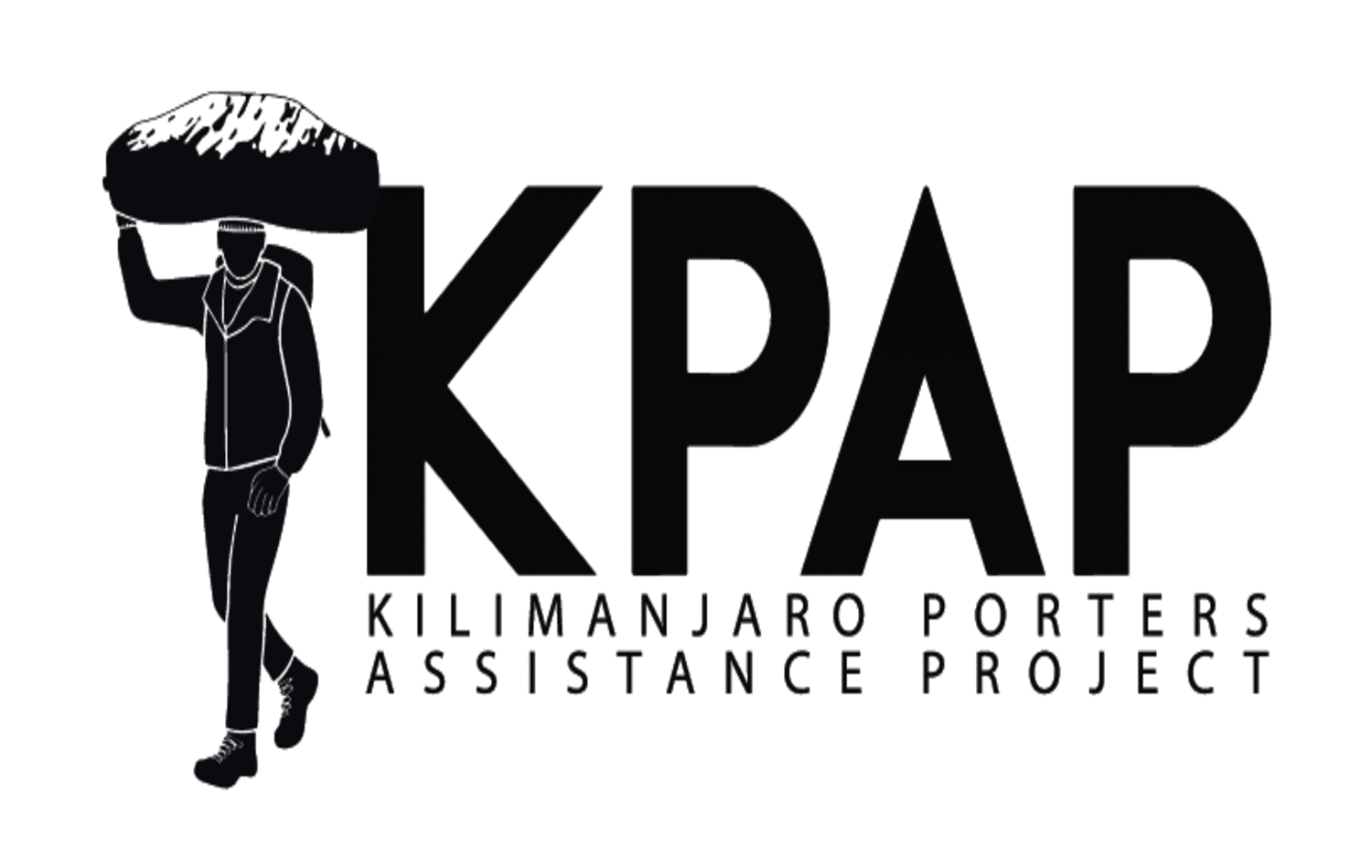

© 2024 Shiri Adventures